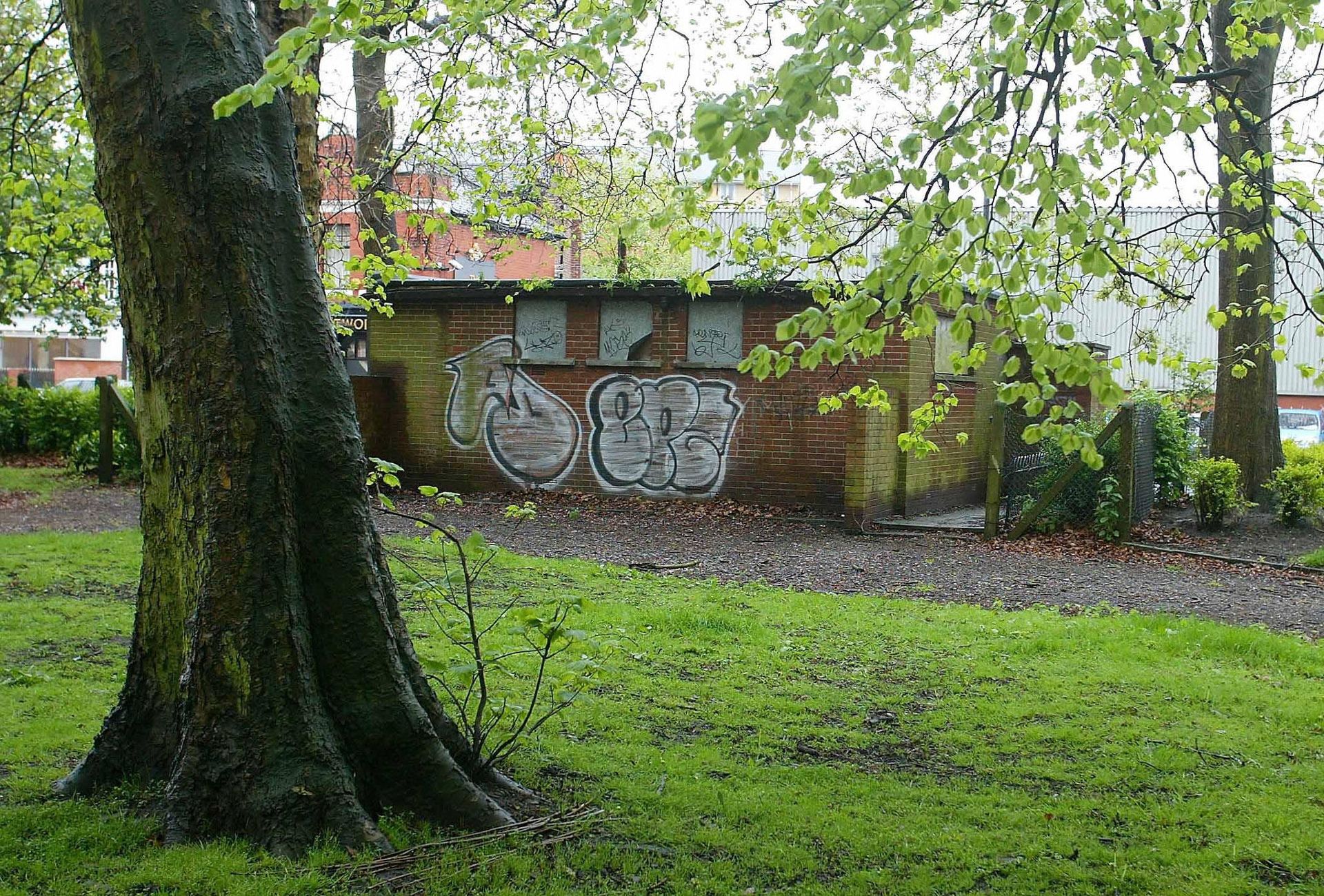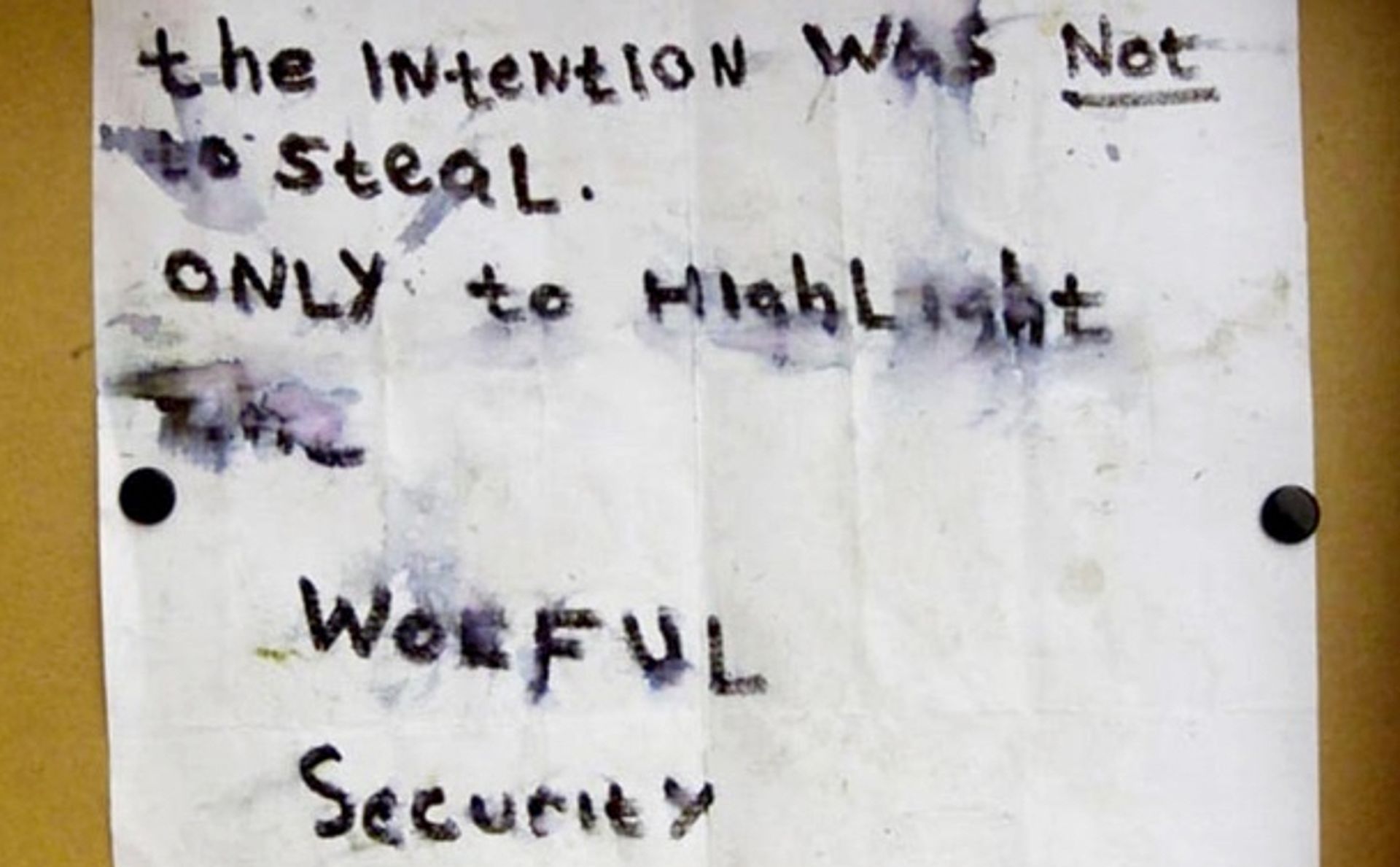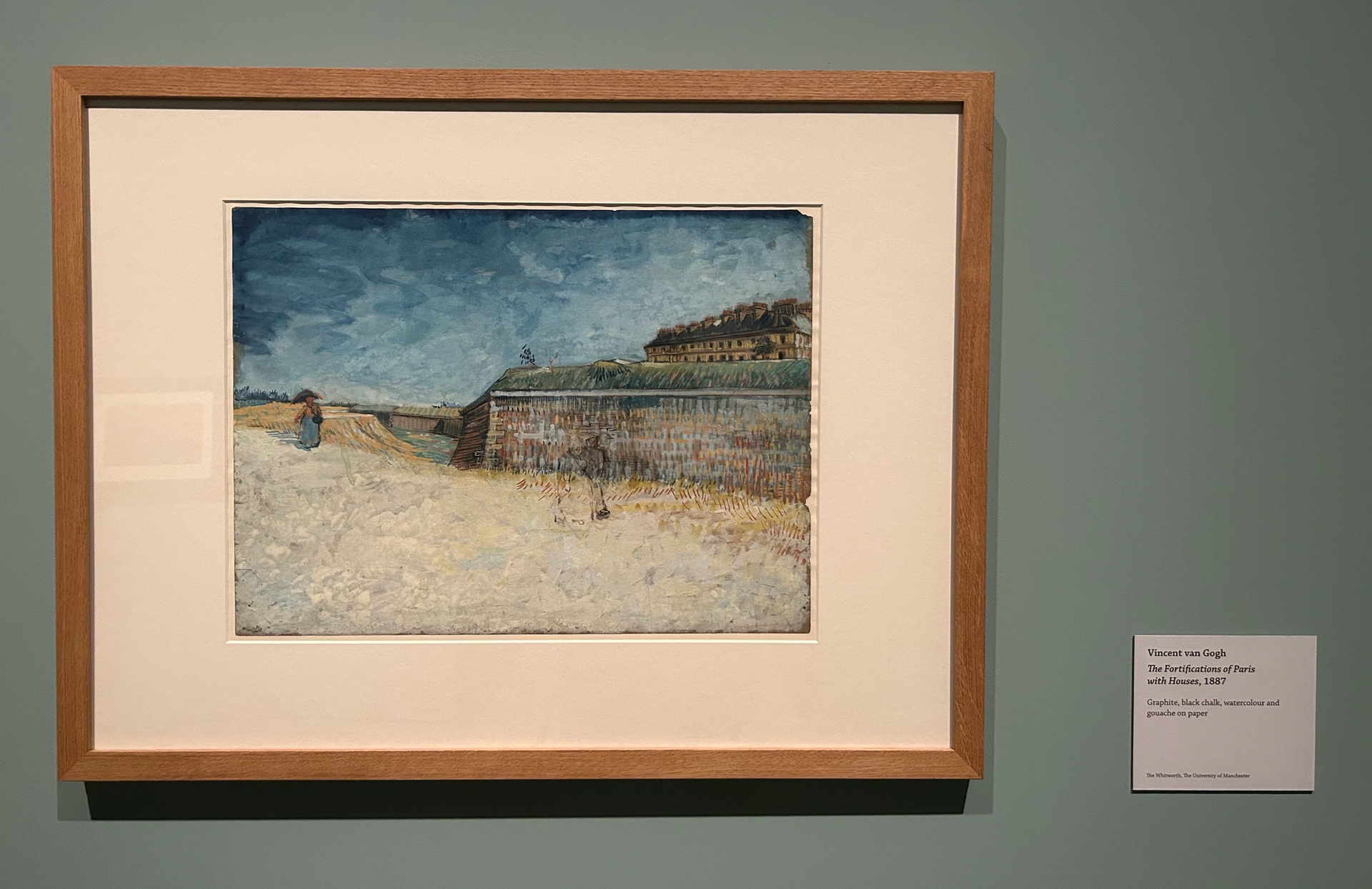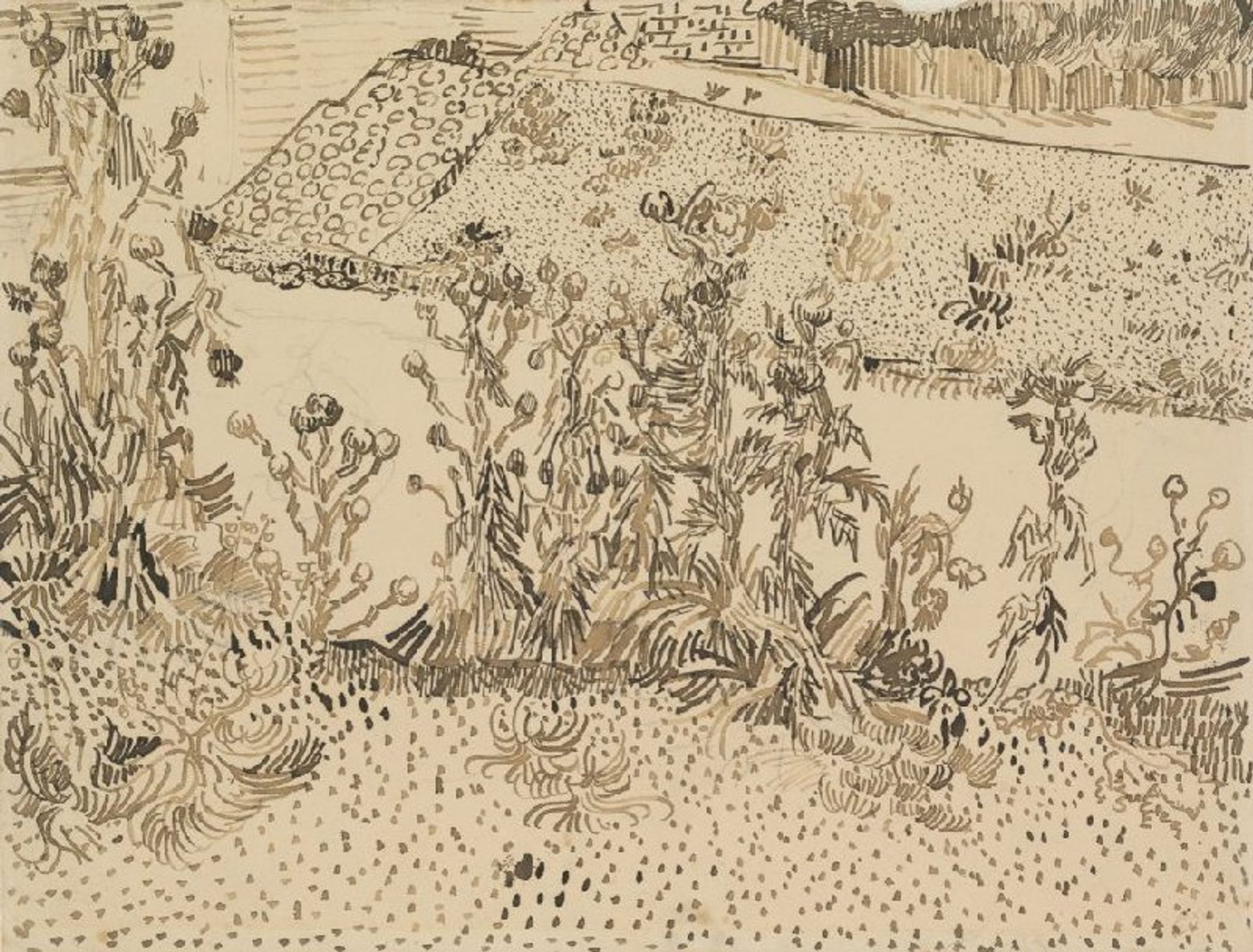Three works by Van Gogh, Gauguin and Picasso were stolen from Manchester’s Whitworth gallery in the very early hours of 27 April 2003. A day later, following a telephone tip-off, they were recovered at a public lavatory, 200 metres away on the edge of a small park. Twenty years on, no one has been charged over the theft.
The thief (or thieves) had seized the works from the gallery walls at night and removed the fragile watercolours from their frames. They were then rolled up in a cardboard tube, with the Van Gogh protruding out of one end. The tube was later abandoned, by being lent against the closed lavatory building, beside sodden leaves and litter. It had been a rainy day and a police statement described the weather as “extremely bad”.

The public lavatory on the edge of Whitworth Park, where the gallery’s Van Gogh, Gauguin and Picasso watercolours were found on 28 April 2003
Credit: PA Images / Alamy Stock Photo; Photo: Phil Noble
Along with Van Gogh’s The Fortifications of Paris with Houses (summer 1887) were Paul Gauguin’s Tahitian Landscape (1891-93) and Pablo Picasso’s Poverty (1903).
The police reported the thief had bypassed the gallery’s security system, suggesting that the incident might have been an “inside job”. Along with the recovered paintings was a note stating that “the intention was not to steal only to highlight the woeful security”.

Waterstained note left with the recovered artworks
Hardly surprisingly, The Fortifications of Paris with Houses suffered during its ordeal. There was a 12-cm tear on the right side, creasing and some minor paint losses. Fortunately the damage had not been much more serious. The watercolour was restored a few months after the theft and the damage is now hardly visible to the naked eye.
Although only rarely on display, to minimise fading, the Van Gogh watercolour is now going on show at London’s Royal Academy of Arts, in their exhibition Impressionists on Paper: Degas to Toulouse-Lautrec (until 10 March 2024).

Van Gogh’s Van Gogh’s The Fortifications of Paris with Houses in the Royal Academy’s current exhibition Impressionists on Paper: Degas to Toulouse-Lautrec
Credit: The Art Newspaper
It remains a mystery whether the theft was done by someone who really wanted to draw attention to security weaknesses or if they quickly realised it would be difficult to dispose of the works. It is even possible that they had a twinge of conscience. Whatever it was, security was immediately upgraded at the Whitworth. With its important art collection, the gallery’s security is now on par with that of national museums.
The Fortifications of Paris with Houses depicts a scene on the northern outskirts of the capital, just over a kilometre north of the apartment which Vincent shared with his brother Theo. The site is probably near the Porte de Saint-Ouen. These 1840s fortifications were demolished after the First World War, to be replaced by a boulevard.
The watercolour and gouache painting shows the ramparts with the upper floors of a large barracks visible above. A woman with a parasol strolls by on the left. In the centre there is a ghost-like image of a couple. Van Gogh probably changed his mind and painted over them, but the overpaint has faded.
Although it appears to depict a peaceful scene, at night the fortifications became more sinister. In 1889 the writer Rodolphe Darzens described the area as the haunt of “murderers, thieves and rapists”.
Van Gogh’s sky, with blues ranging from deep to light, is reminiscent of some of the powerful landscapes which he would paint in oils a year or two later in Provence.
In 1926 the watercolour was bought for £157 by the Manchester cotton company owner Thomas Barlow (1883-1964), who immediately donated it to the Whitworth. When in 1962 the Van Gogh was lent for an earlier exhibition at the Royal Academy it was insured for £7,500. Its current valuation is confidential, but it is certainly worth several millions.

Van Gogh’s Thistles by the Roadside (August 1888)
Credit: Van Gogh Museum, Amsterdam (Vincent van Gogh Foundation)
The Royal Academy’s current show Impressionists on Paper: Degas to Toulouse-Lautrec includes five other Van Goghs.
These are: The Entrance to the Pawn Bank, The Hague (March 1882, Van Gogh Museum, Amsterdam), Thatched Roofs (March 1884, Tate, London), Peasant Woman carrying Wheat in her Apron (July-August 1885, Kröller-Müller Museum, Otterlo), Bust of a young Warrior (March-May 1886, Van Gogh Museum) and Thistles by the Roadside (August 1888, Van Gogh Museum).
It is now difficult to borrow Van Gogh drawings for exhibitions, because of concerns about fading, so to have six works is an achievement. Together they represent most of the periods of the artist’s short career.
Other Van Gogh news:
The Musée d’Orsay in Paris is to lend Starry Night over the Rhône (September 1888) to the Fondation Vincent van Gogh Arles, where it will be the centrepiece of an exhibition on Van Gogh and the Stars (1 June-25 August 2024). The loan is part of an Orsay project to mark the 150th anniversary of the first Impressionist exhibition. Appropriately, Starry Night over the Rhône will temporarily return to the city where it was painted.

Van Gogh’s Starry Night over the Rhône (October 1888)
Credit: Musée d’Orsay, Paris




